Can dogs get lice?
This intriguing question opens the door to an exploration of the parasitic world that can affect our beloved canine companions. Lice, tiny wingless insects that feed on blood and reside in the hair and fur of mammals, have long been associated with human infestations.
However, it is often overlooked that dogs, too, can fall victim to these parasitism. Understanding lice in dogs is crucial for their well-being and for maintaining a harmonious relationship between humans and their furry friends.
In this article, we will delve into the intricacies of lice infestations in dogs, exploring how they are spread among these animals and how to recognize the symptoms. We will also discuss treatment options available to eradicate lice from your dog’s coat and highlight the importance of cleaning and disinfecting their environment.
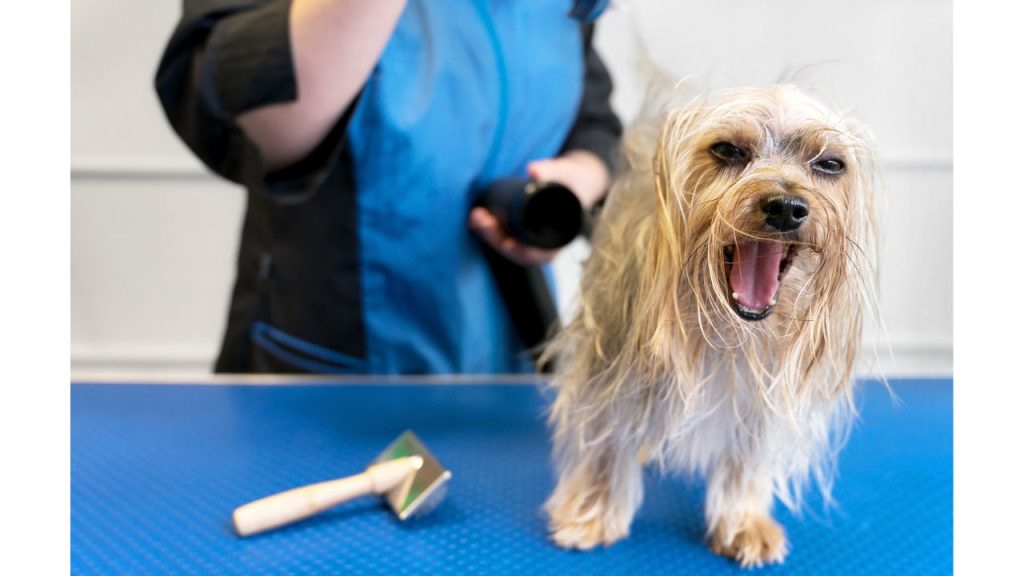
Additionally, we will address common misconceptions surrounding lice in dogs and when it is necessary to seek veterinary care.
By equipping ourselves with knowledge about lice in dogs, we can better protect our four-legged companions from discomfort and ensure a healthy living environment for both them and us.
Key Takeaways
- Dogs can get lice, which can cause itching, irritation, and skin infections.
- Lice infestations in dogs can be spread through direct contact or indirectly through shared bedding, brushes, or toys.
- Lice found on dogs are species-specific and cannot infest humans directly, but may cause temporary itching and discomfort if they come in contact with human skin.
- Treatment options for lice in dogs include natural remedies, such as herbal shampoos or essential oils, as well as chemical treatments with topical insecticides.
Understanding Lice in Dogs
Lice infestations in dogs are a notable concern, as understanding the characteristics and behavior of lice is crucial to effectively managing their presence.
One key aspect to comprehend about lice in dogs is their life cycle. Lice have three stages: eggs (nits), nymphs, and adults. The eggs are attached to the dog’s hair shafts, while the nymphs and adults feed on the dog’s blood. These parasites can cause itching, irritation, and even skin infections in dogs.
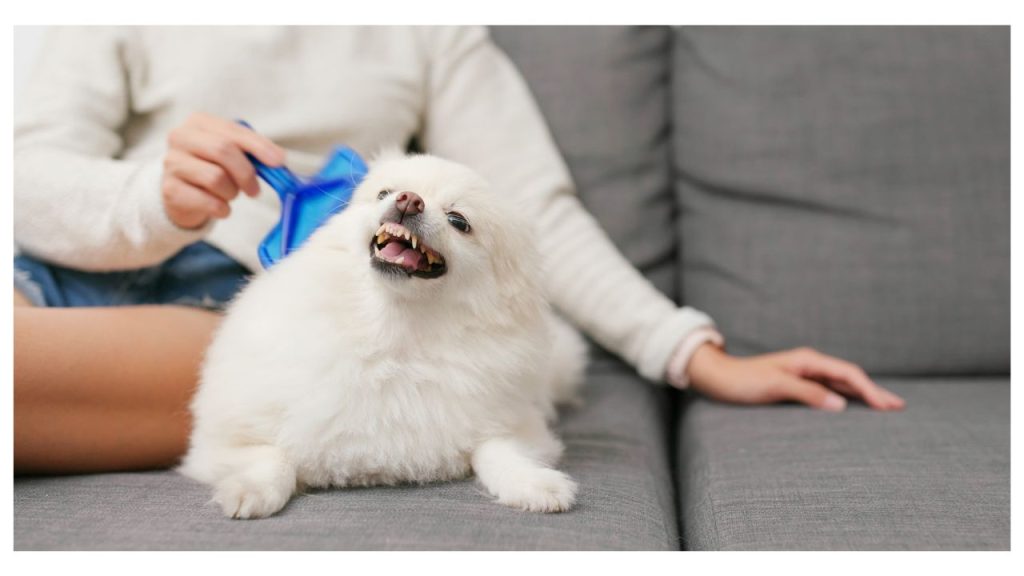
When it comes to treating lice in dogs, there are natural remedies that can be considered. Some pet owners opt for herbal shampoos or essential oils with insect-repelling properties. Additionally, regular grooming practices such as combing with a fine-toothed comb can help remove lice and nits from a dog’s coat.
Understanding the life cycle of lice in dogs and exploring natural remedies for their treatment can aid in effectively managing these infestations and ensuring the well-being of our canine companions.
How Lice are Spread among Dogs
Transmitted through direct contact, lice are able to spread among canines, making it crucial for pet owners to understand the mechanisms by which these parasites are transferred. Dogs with lice can easily transmit them to other dogs when they come into close contact, such as during play or grooming sessions.
Lice eggs (nits) and adult lice can also be transferred indirectly through shared bedding, brushes, or toys. It is important to note that although lice found on dogs are species-specific and cannot infest humans directly, they may still cause temporary itching and discomfort if they come in contact with human skin.
Understanding the lifecycle of lice in dogs is essential for effective prevention and treatment strategies. Lice undergo three stages of development – egg, nymph, and adult – with each stage requiring a specific environment to survive and reproduce successfully.
Recognizing the Symptoms of Lice Infestation in Dogs
One important aspect to consider is the ability to recognize the symptoms of lice infestation in canines.
Lice are tiny insects that feed on the blood of dogs and can cause discomfort and irritation.
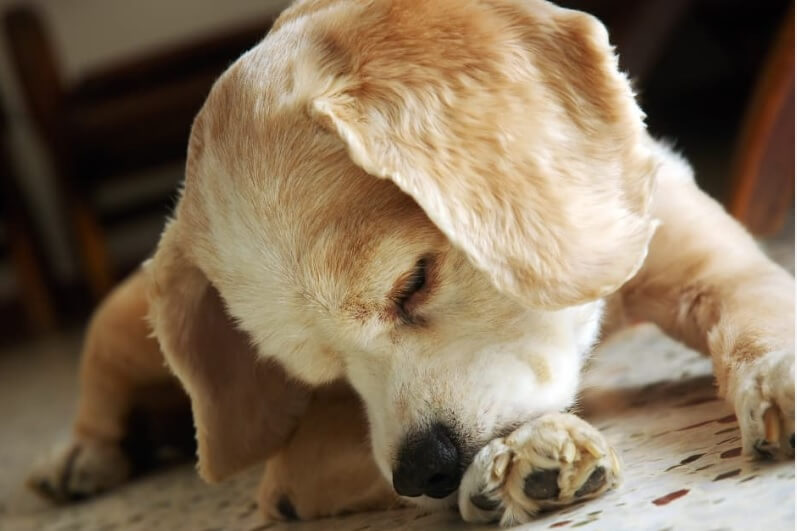
It is crucial for dog owners to be aware of these symptoms in order to provide appropriate treatment and prevent further infestation.
Common signs of lice infestation include excessive scratching, redness or inflammation of the skin, hair loss, and the presence of small white or yellowish eggs (nits) attached to the fur.
Regular grooming and inspection of your dog’s coat can help in early detection.
Additionally, maintaining good hygiene practices such as washing bedding regularly and avoiding contact with infected animals can greatly reduce the risk of lice infestation in dogs.
Differentiating Lice from Other Parasites
Differentiating lice from other parasites can be compared to distinguishing between two similar-looking puzzle pieces, as both may cause discomfort and irritation in canines. However, there are key differences that can help identify lice infestation in dogs.
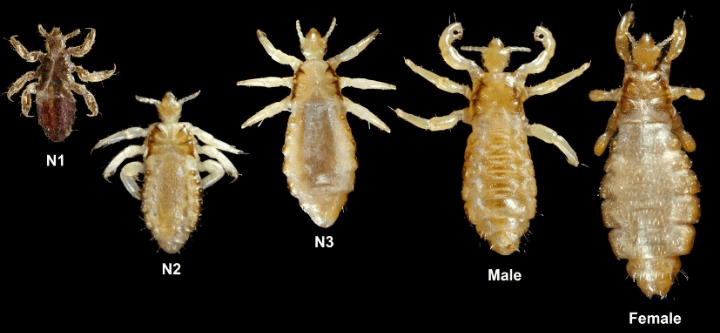
- Differentiating lice from fleas:While both parasites may cause itching and scratching, fleas are tiny insects that jump and move quickly on the dog’s fur, while lice are wingless insects that crawl slowly.
- Identifying lice eggs and nits:Lice lay their eggs, called nits, close to the base of the hair shafts. These nits are small white or yellowish oval-shaped structures that stick firmly to the hair fibers. Flea eggs, on the other hand, are smooth and easily fall off.
- Visual inspection: A close examination of the dog’s coat using a fine-toothed comb can reveal live adult lice or their eggs/nits.
- Veterinary diagnosis unsure about differentiating between lice and other parasites, seeking professional veterinary guidance is recommended for accurate identification and appropriate treatment.
By being aware of these distinguishing features, pet owners can effectively differentiate lice from other parasites when assessing their dogs’ health and well-being.
Treatment Options for Lice in Dogs
Treatment options for lice in canines encompass various approaches aimed at eradicating the infestation and relieving discomfort. When it comes to dog lice prevention, regular grooming practices are essential. Regularly checking your dog’s coat for any signs of lice, such as itching or hair loss, is crucial in identifying an infestation early on. Additionally, maintaining a clean living environment by regularly washing bedding and vacuuming can help prevent the spread of lice.
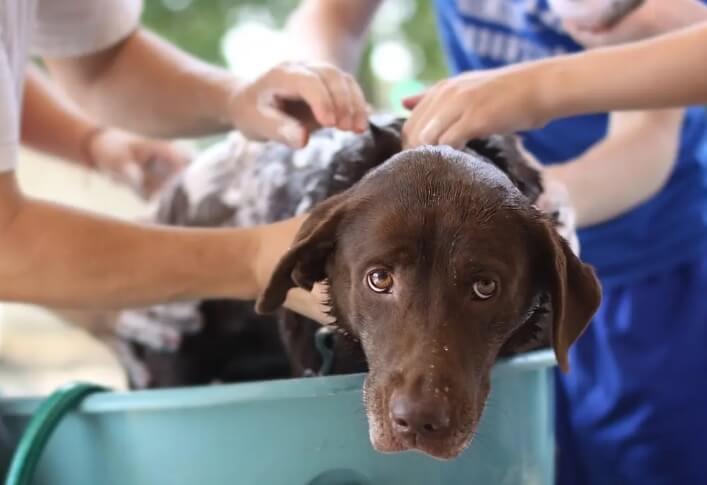
In terms of treatment, there are both chemical and natural lice treatments available for dogs. Chemical treatments usually involve topical insecticides that kill adult lice and their eggs. However, it is important to consult with a veterinarian before using any chemical products to ensure their safety and effectiveness.
Alternatively, some pet owners may prefer natural remedies for treating dog lice. These include using essential oils like neem oil or lavender oil, which have insecticidal properties. However, it is important to note that natural treatments may not be as effective as chemical ones and should be used under the guidance of a veterinarian.
Overall, preventing and treating lice in dogs requires a combination of regular grooming practices, maintaining cleanliness in the living environment, and consulting with a veterinarian for appropriate treatment options.
Learn more for Ultimate Guide on How to Get Rid of Fleas on Dogs
Medicated Shampoos and Topical Treatments
Medicated shampoos and topical treatments offer a targeted approach to combating lice infestations in canines, utilizing specialized formulations that effectively eliminate the parasites.
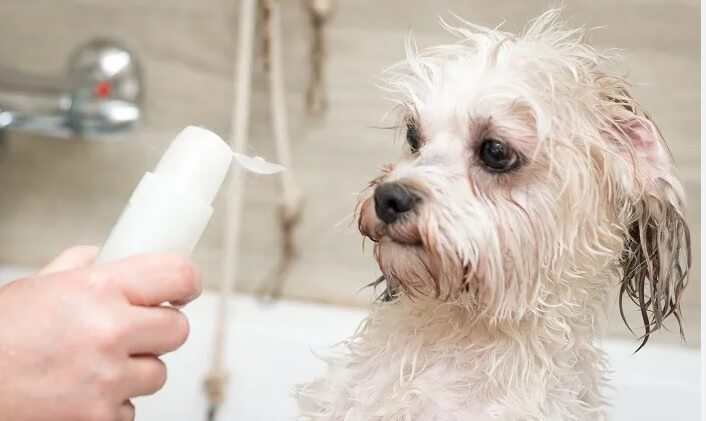
These treatment options are designed to specifically target lice on the dog’s coat and skin, providing a convenient and efficient solution for pet owners.
Medicated shampoos contain active ingredients that are known to kill lice upon contact, while topical treatments often come in the form of spot-on solutions or sprays that are applied directly to the affected areas.
These products typically work by suffocating or poisoning the lice, ultimately leading to their eradication.
It is important for pet owners to carefully follow the instructions provided with these medicated shampoos and topical treatments, as improper use may reduce their effectiveness.
Regular bathing and grooming practices should also be maintained alongside these treatments to prevent re-infestation.
Oral Medications
Transitioning from the previous subtopic of medicated shampoos and topical treatments, it is important to explore other options for treating lice in dogs. One alternative approach is the use of oral medications. These medications are designed to be ingested by the dog, allowing the active ingredients to enter their bloodstream and effectively combat lice infestations from within.
When considering oral medications for treating lice in dogs, there are a few key points to keep in mind:
- Effectiveness: Oral medications have been found to be highly effective in eliminating lice infestations in dogs.
- Convenience: Unlike topical treatments that require frequent applications, oral medications typically only need to be administered once or twice.
- Safety: It is essential to consult with a veterinarian before administering any oral medication to ensure proper dosage and potential side effects.
While oral medications can be an effective treatment option, it is worth noting that there may also be alternative treatments available for managing lice infestations in dogs.
Environmental Cleaning and Prevention
Environmental cleanliness plays a crucial role in preventing and controlling lice infestations, ensuring a safe and comfortable living environment for our furry companions. Regular cleaning of the dog’s bedding, toys, and other items they come into contact with can help eliminate any potential lice or eggs that may be present.

Additionally, vacuuming the house thoroughly and frequently can remove any stray lice or eggs that may have fallen off the dog. Natural prevention techniques such as using essential oils like lavender or eucalyptus can also be effective in repelling lice. It is important to avoid using harsh chemicals or pesticides when cleaning as they can be harmful to both dogs and humans. By maintaining a clean environment and utilizing natural prevention methods, we can reduce the risk of lice infestation in our canine companions.
| Environmental Cleaning Methods | Natural Prevention Techniques |
|---|---|
| Regularly clean dog’s bedding | Use essential oils (lavender, eucalyptus) |
| Clean dog’s toys | Avoid using harsh chemicals |
| Vacuum house frequently |
Home Remedies for Treating Lice in Dogs
One option for addressing lice infestations in canines involves utilizing home remedies, which employ natural ingredients and methods to combat the issue.
Home remedies for treating lice in dogs have gained popularity among pet owners who prefer a more holistic approach. Natural treatments often involve the use of essential oils such as lavender or tea tree oil, which are known for their insecticidal properties. These oils can be diluted and applied topically to the affected areas of the dog’s fur, effectively suffocating and killing the lice.
Additionally, some pet owners opt for herbal shampoos or sprays that contain ingredients like neem oil or rosemary extract, which have been found to repel and kill lice.
It is important to note that while home remedies may provide relief from lice infestations, consulting with a veterinarian is recommended to ensure proper diagnosis and treatment.
Preventing Lice Infestation in Dogs
To prevent lice infestation in canines, implementing regular grooming practices and maintaining a clean living environment are essential. By following these preventive measures, dog owners can effectively reduce the risk of their pets getting lice.
Additionally, there are several natural lice prevention methods that can be employed:
- Regularly bathe the dog using a gentle shampoo that contains essential oils known for repelling lice.
- Comb the dog’s fur with a fine-toothed comb to remove any potential lice or nits.
- Avoid sharing grooming tools with other dogs to minimize the chance of cross-contamination.
- Inspect and treat bedding regularly by washing it in hot water or using appropriate sprays.
- Keep the dog away from potentially infested areas such as communal dog parks or kennels.
These preventative measures will not only protect dogs from infestations but also contribute to their overall well-being.
Regular Grooming and Inspections
Regular grooming and regular inspections of a canine’s fur and skin are crucial in preventing and identifying any potential lice infestations. Understanding the life cycle of lice is essential for effective prevention.
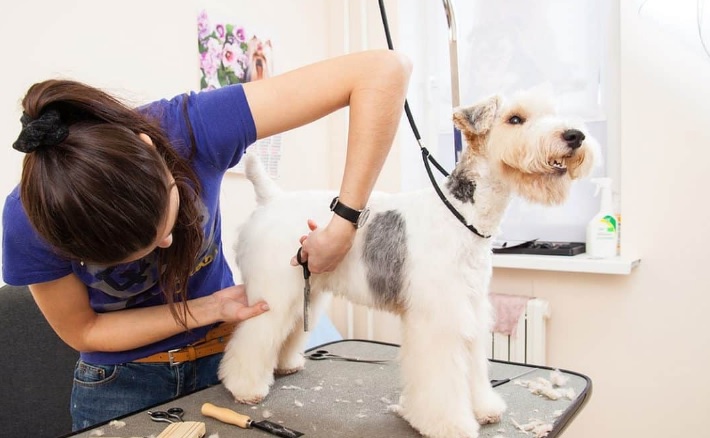
Lice undergo three stages: egg (nit), nymph, and adult. By regularly inspecting a dog’s fur, pet owners can identify the presence of lice eggs or nits, which are small yellowish-white oval-shaped structures attached to individual hairs close to the base. These nits hatch into nymphs, which then mature into adult lice that feed on blood from their host.
Regular grooming helps remove any loose hair or debris where lice may reside, reducing the risk of infestation. It also promotes healthy skin and coat condition, making it easier to spot any signs of an infestation promptly.
In summary, maintaining a routine grooming schedule and conducting thorough inspections play a fundamental role in preventing and addressing lice infestations in dogs.
Avoiding Contact with Infested Dogs
In order to prevent the spread of lice infestations, it is advisable to refrain from direct contact with canines that have been identified as hosts. Avoiding contact with infested dogs is crucial in minimizing the risk of transmitting lice to other dogs or humans.
To effectively avoid contact with these dogs, consider the following measures:
- Maintain a safe distance from infested dogs during walks or visits to public places.
- Avoid sharing bedding, toys, or grooming tools with infested dogs.
- Do not allow infested dogs to interact closely with other animals or children.
- If encountering an infested dog is unavoidable, wear protective clothing such as gloves and long sleeves.
By adhering to these guidelines and avoiding direct contact with infested dogs, one can greatly reduce the likelihood of lice transmission and contribute to maintaining a healthy environment for both canines and humans.
Cleaning and Disinfecting Dog’s Environment
Maintaining a clean and disinfected environment for canines is essential in preventing the spread of lice infestations and ensuring the overall health and well-being of these animals. Implementing proper cleaning techniques is crucial to eliminate any potential lice eggs or adult lice that may be present.
Regularly vacuuming carpets, upholstery, and bedding can help remove any stray lice or eggs that may have fallen off an infested dog.
Additionally, washing all dog-related items such as blankets, toys, and brushes in hot water with effective disinfectants can further aid in eradicating lice. It is important to note that not all disinfectants are suitable for use on dogs’ belongings, so it is necessary to choose products specifically formulated for pet use.
By diligently maintaining cleanliness and using appropriate disinfectants, dog owners can effectively prevent the spread of lice infestations among their pets.
Common Misconceptions about Lice in Dogs
Contrary to popular belief, there are several misconceptions surrounding lice infestations in canines. It is important to debunk these myths and provide accurate information about lice transmission and symptoms in dogs.
Common misconceptions about lice transmission in dogs include:
- Dogs can get lice from humans: While human lice cannot infest dogs, there are specific species of lice that target canines.
- Lice can jump or fly: Lice are wingless insects that crawl from one host to another through direct contact or by sharing contaminated items.
- Lice infestations indicate poor hygiene: Lice infestations can occur regardless of a dog’s cleanliness and are not indicative of neglect.
- All itching is caused by lice: Itching is a common symptom of various skin conditions, and it does not necessarily mean the presence of lice.
- Over-the-counter products eliminate all lice: Some louse populations have developed resistance to certain treatments, requiring veterinary intervention.
By dispelling these misconceptions and educating pet owners about common lice symptoms in dogs, we can ensure their pets receive appropriate care and prevent the spread of infestations.
When to Seek Veterinary Care for Lice Infestation
Seeking veterinary care for a lice infestation in canines is crucial to ensure prompt and effective treatment, ultimately preserving the health and well-being of our beloved pets. The importance of veterinary care cannot be overstated when it comes to dealing with lice infestations in dogs.
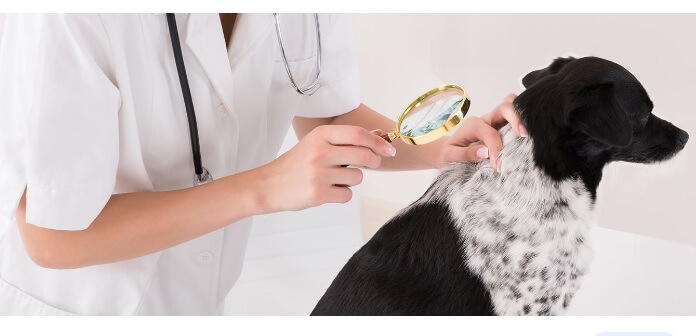
While lice infestations are generally not life-threatening, they can cause discomfort and skin irritation for our furry companions. A veterinarian will be able to accurately diagnose the presence of lice through thorough examination and microscopic analysis. They will also determine the severity of the infestation and recommend appropriate treatment options, which may include medicated shampoos or topical treatments.
Additionally, seeking veterinary care allows for early detection of any underlying health issues that may have contributed to the infestation. It is important for dog owners to recognize common signs of a lice infestation such as excessive itching, hair loss, and visible nits or adult lice on the fur.
By promptly seeking veterinary care, we can ensure that our dogs receive the necessary treatment and support they need to overcome this bothersome condition.
See Also:
- How Long Can Dogs Hold Their Pee
- Why Do Dogs Fart? Exploring the Canine Flatulence Phenomenon
- Can Dogs Use Human Shampoo
- What Do Dog Ear Mites Look Like
- Do Mosquitoes Bite Dogs
- Can Humans Get Worms From Dogs
- Can Dogs Have Nightmares
- Shivering in Dogs
- Why Does My Dog Nibble On Me
- How To Clean Dogs Ears
- When Can Puppies Leave Their Mom
- How To Surrender A Dog
Conclusion
In order to ensure the well-being of our canine companions, it is essential to implement preventive measures and regular grooming practices to minimize the risk of lice infestations.
Keeping dogs clean and using preventative measures are crucial steps in maintaining a lice-free environment for our furry friends. Regular baths with dog-friendly shampoos can help remove any potential lice or nits that may be present on the dog’s fur. Additionally, thorough brushing and combing can help detect early signs of infestation and prevent further spread.
It is important to regularly inspect your dog’s bedding, toys, and living areas as these can also harbor lice. By practicing good hygiene habits and employing preventive measures, such as avoiding contact with infested animals or environments, we can reduce the likelihood of lice infestations in our dogs and promote their overall health and well-being.
If you can’t find the right dog for you to adopt locally, please consider adopting a dog from Bone Voyage Dog Rescue. We’ll fly with your dog to you.
Frequently Asked Questions
Can humans get lice from their dogs?
Lice cannot be transmitted from dogs to humans. However, if a person comes into contact with an infested dog, they may experience temporary itching or irritation. Over-the-counter treatments can be used for canine lice infestations, but veterinary treatment is recommended for severe cases.
Are all lice species the same?
All lice species vary in their types and characteristics. They can be categorized based on their preferred host, body size, and specific adaptations. Understanding these distinctions is crucial for effective prevention and treatment strategies.
Can lice infestations in dogs be prevented?
Preventing lice infestations in dogs can be achieved through regular grooming, maintaining a clean living environment, and using effective treatments. Various products such as shampoos, sprays, and collars are available to treat lice infestations in dogs effectively.
Are there any natural remedies for treating lice in dogs?
Various natural remedies can be employed to address lice infestations in dogs. These treatments, derived from organic sources, offer an alternative approach to treating such conditions without the use of chemicals or harsh substances.
Can lice infestations in dogs be transmitted to other pets in the household?
Lice infestations in dogs can be transmitted to other pets in the household. To prevent transmission, all pets should be examined and treated if necessary. Treatment options for other pets may include topical insecticides or oral medications prescribed by a veterinarian.
